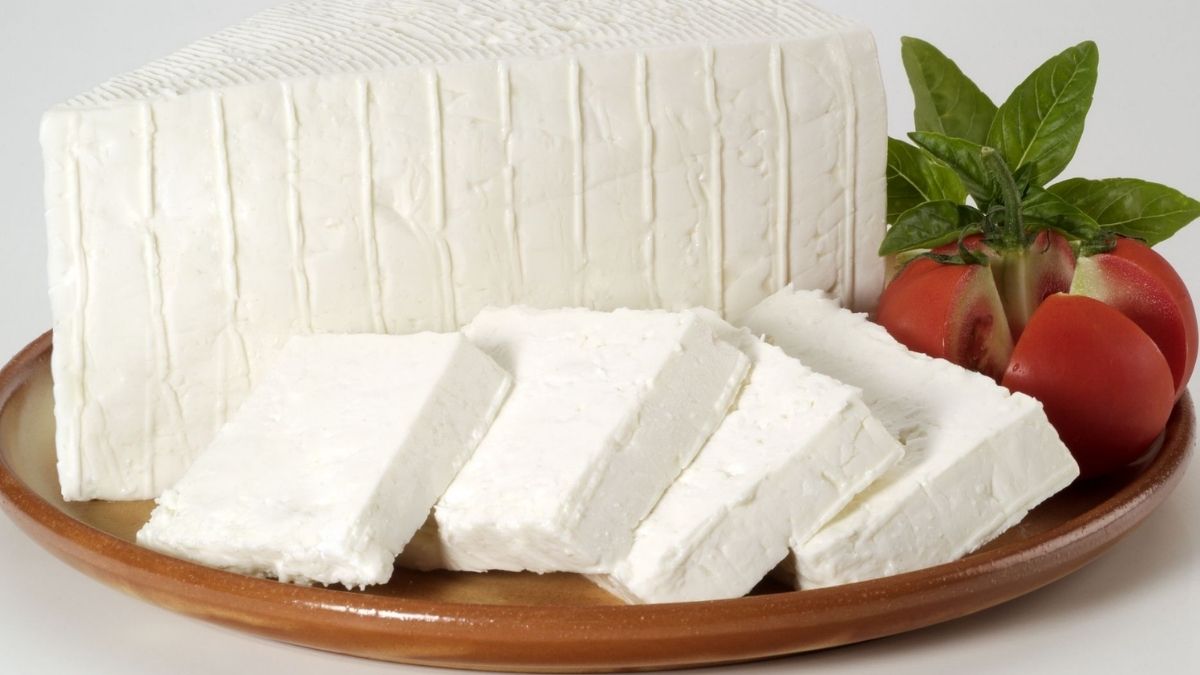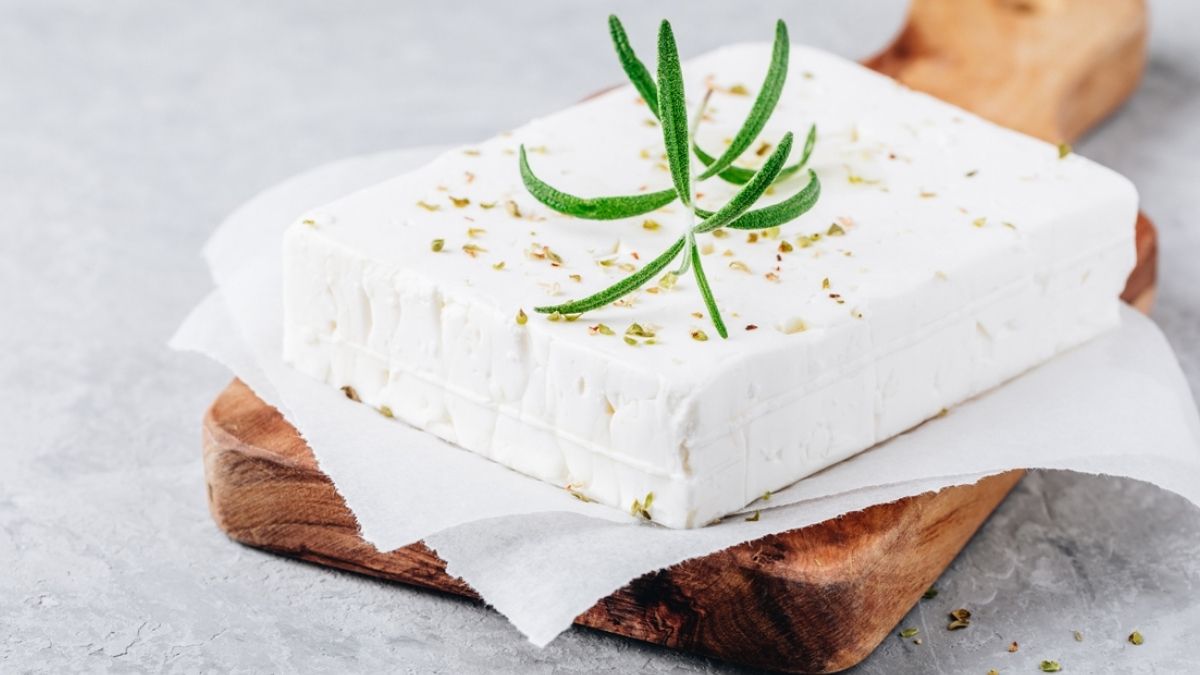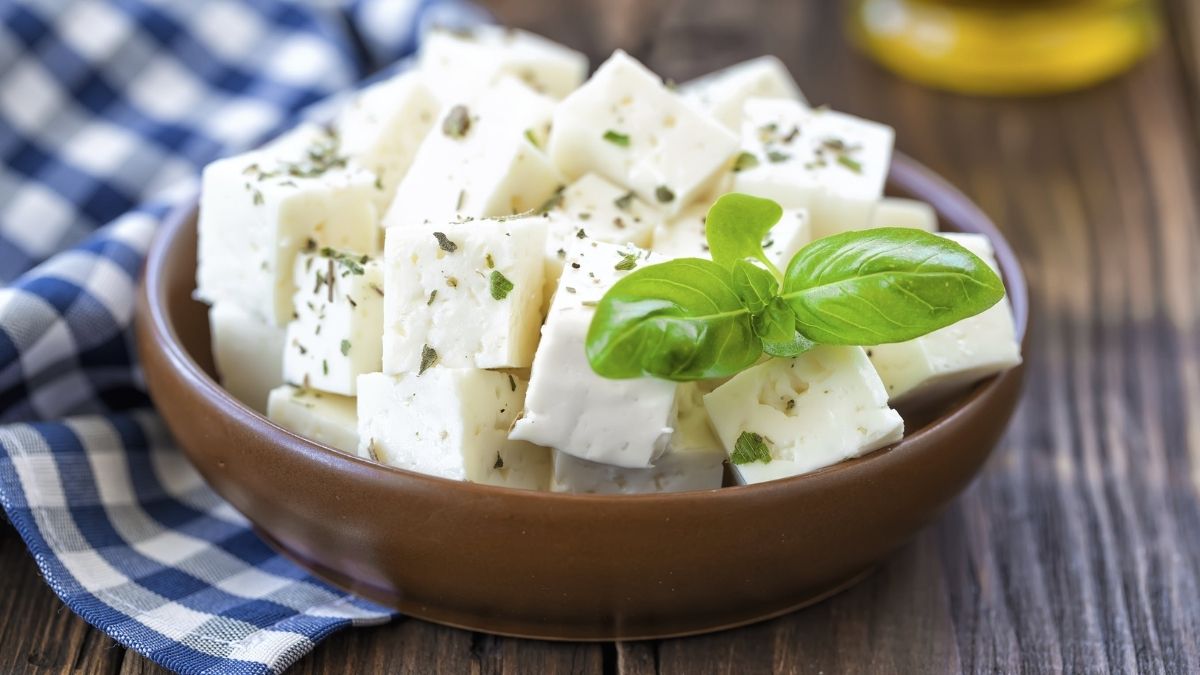Authentic feta is a soft, crumbly brined cheese from Greece usually made using sheep’s milk, which has twice the fat content of cow’s milk. Producers can now blend up to 30% sheep’s milk with up to 30% goat’s milk, thanks to modern rules governed by protected designation of origin (PDO) status. Feta cheese has been around for millennia, and it can be found in almost every Greek dish. In the United States, cheesemakers make feta-style cheese from cow’s milk, but the quality varies greatly.
Feta contains less fat and calories than matured cheeses like cheddar or Parmesan and more calcium and B vitamins than soft cheeses like ricotta or cottage cheese. Due to the high sodium level of the brine, feta should not be taken on a salt-restricted diet. Feta cheese is a famous Greek cheese with a tangy, salty flavor. It’s usually eaten with salads, although it can also be served with other savory foods. Although it is most known for its distinct salty flavor, it is also gaining popularity due to its nutritional benefits. Whether you buy it in a store or prefer to make it at home, include it in your diet to reap the benefits of its nutrients and flavor.
How is Feta Cheese Made?
Because it is so prevalent in Greece, only a tiny amount is exported, and Italy supplies the majority of feta cheese imported into the United States. Many countries, including Australia, Denmark, Germany, and the United States, now produce feta. On the other hand, modern mass production frequently uses cow’s milk and may employ skimmed or partially skimmed milk to lower fat content.
Traditional methods in Greece begin with the addition of rennet and casein to pasteurized or raw sheep’s milk, goat’s milk, or a combination of the two. When the milk solidifies, the curd is separated, squeezed into molds, and drained of excess whey. Cheesemakers slice the feta into smaller blocks (feta means “sliced” in Greek), salt, dry it for two days, then submerge it in brine for one week to many months. Unfortunately, Greece’s high demand for feta cheese and prohibitions on unpasteurized milk make finding genuine articles outside of Greece complex. If you do, it will be expensive. You may manufacture your feta cheese with goat’s milk at home.
What are the Uses of it?
Feta crumbles readily, making it an excellent addition to salads and a substitute for shredded mozzarella on pizzas and flatbreads. It’s also delicious and sprinkled on roasted vegetables of any variety.
Let feta come to room temperature before using it in raw meals like appetizers for the most delicate flavor. Serve it alongside crusty bread pieces, olives, and sliced meats on an appetizer dish. Alternatively, combine it with a bit of lemon juice and oil to take a dip. Feta softens but never totally melts in hot meals, making it ideal for adding texture and flavor to baked casseroles, savory pastries, and stews like the traditional stiffed. It would also work well in a quiche or other savory pie. It is a delicious filling for stuffed burgers, and it goes exceptionally well with lamb.
Is Feta Cheese Healthy?
Sodium
Healthy people should consume no more than 2,300 mg of sodium per day. If you have been diagnosed with heart disease, are over 50, or are African American, you should limit your intake to 1,500 milligrams. Too much sodium in your diet puts you at risk for stroke, renal disease, high blood pressure, and congestive heart failure. The salt content of a 1-ounce serving of feta cheese is 316 milligrams.
Beneficial Nutrients
Including Feta in your Diet

Is Feta Cheese Sheep or Goat?
What does Sheep Feta Taste Like?
It has a flavor that is acidic, thick, and somewhat salty. The older it gets, the more “peppery” and complicated it becomes. Feta manufactured chiefly from sheep’s milk has a richer buttery flavor, while goat cheese is firmer and milder in flavor. Despite being brined, it possesses many “fresh” cheese properties. It is a highly salty cheese because of its peculiar processing. It has a strong flavor when produced using sheep’s milk (almost gamey). It’s still salty when prepared using cow’s milk, but you won’t get that tremendous rich flavor — you’ll get salt.
Some Additional Factors
The cheese’s flavor is salty and sour, and it can be mild or sharp. It is typically served with olives or olive oil and crumbly texture. Due to the usage of sheep and goat milk in its preparation, it is not vegan and is a dairy product. It quickly dries out and becomes sour when stored incorrectly. If you leave it submerged in the brine for several months, it will stay fresh. If you accidentally drain the brine from your packaged feta, you may mix some up to store any leftovers. In general, use one teaspoon of kosher salt per water, using more or less as necessary. Unopened packages of dry, crumbled feta (the kind found in most grocery stores) can be frozen for months without losing any quality.
It is a type of brine-aged curd cheese, and it is originally from Greece. The Mediterranean diet and Greek cuisine include this tasty, crumbly cheese. The Greek term ‘feta’ derives from the Italian word slice.’ In the nineteenth century, the name feta came associated with a type of cheese cut into bars and slices. Cheese is often created from cow’s milk. On the other hand, traditional feta is entirely made of sheep’s milk, and this creamy, white cheese is prepared with sheep and goat milk. The process of making it is lengthy and comprises several phases.

